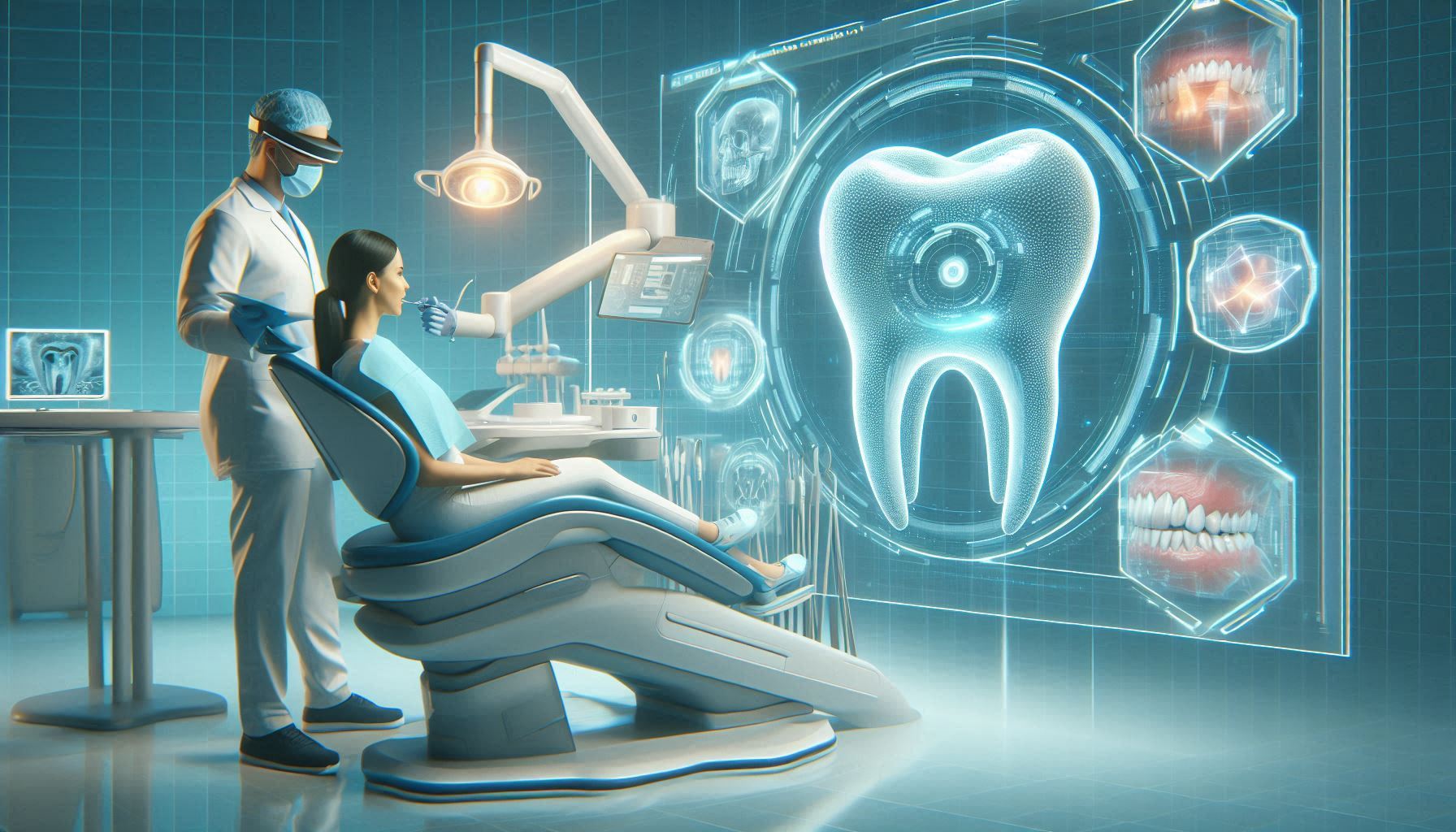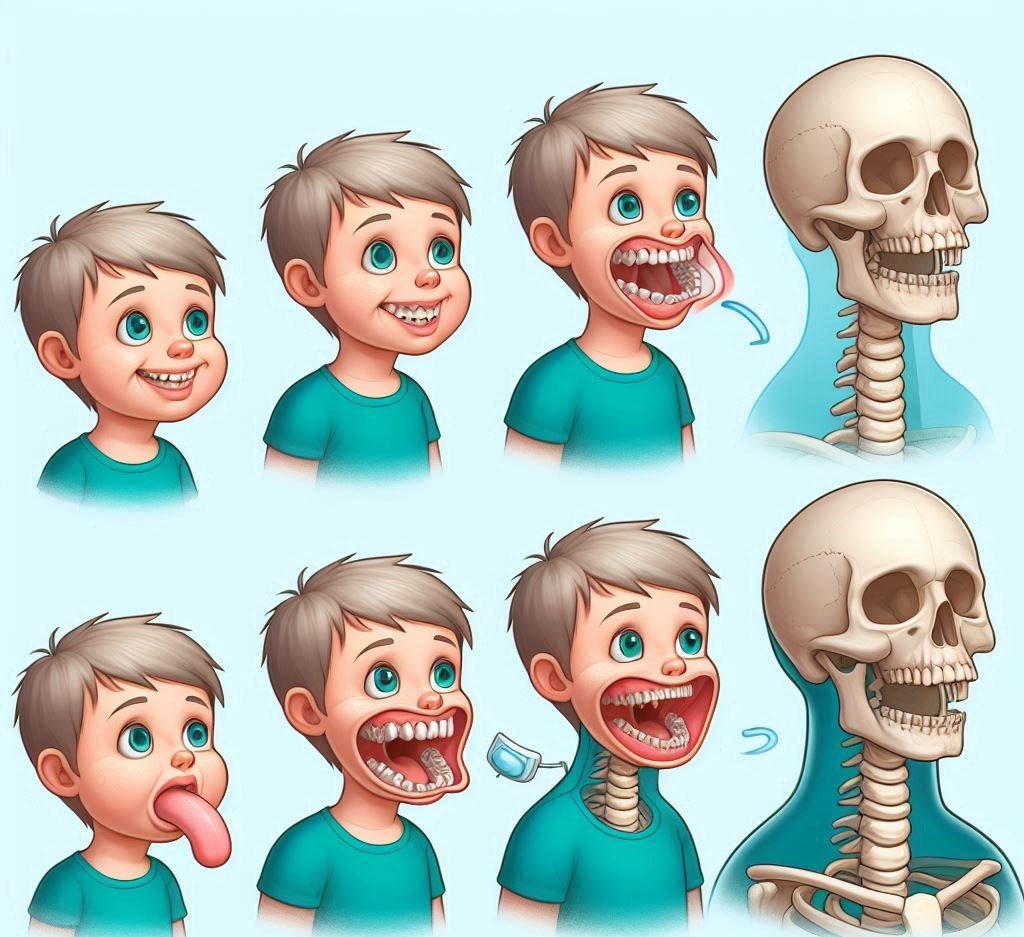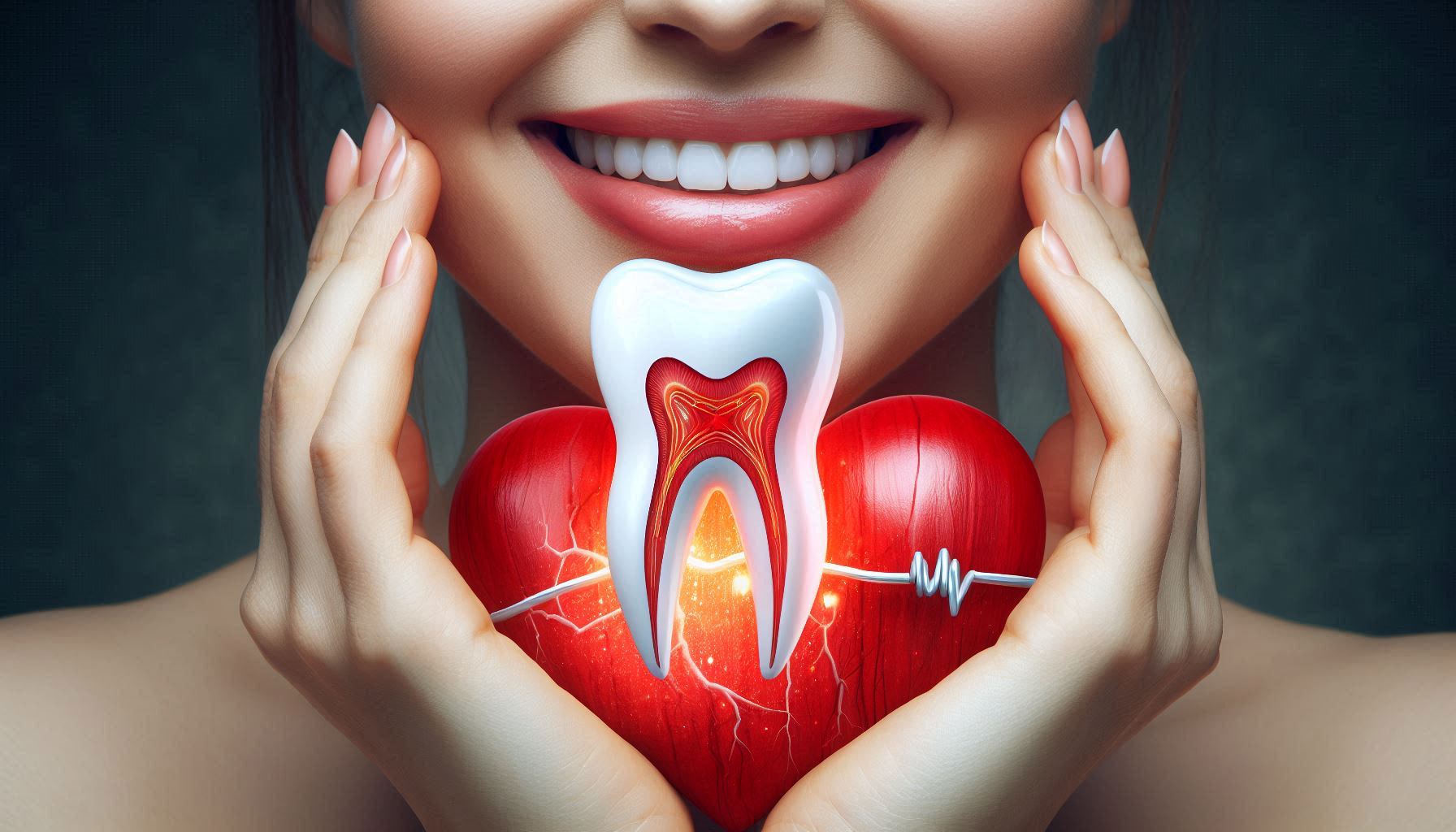The dental field is undergoing a remarkable transformation driven by technological advancements that are fundamentally changing how dental care is delivered. Innovations in digital tools, materials, and treatment methodologies are not only reshaping clinical practices but also enhancing the overall patient experience. Digital tools, such as teledentistry and digital imaging, enable more efficient and accessible care. Teledentistry allows patients to consult with dental professionals remotely, which is especially beneficial for those in rural or underserved areas. This innovation makes dental advice and follow-up care more convenient, helping to bridge gaps in access to oral health services. Meanwhile, digital imaging technologies provide high-resolution diagnostic capabilities, allowing for early detection of dental issues and more accurate treatment planning.
Additionally, advancements in materials and treatment techniques are improving the quality and longevity of dental restorations. Innovations like 3D printing enable the rapid production of custom dental appliances, enhancing fit and comfort while reducing wait times for patients. These developments are complemented by artificial intelligence, which aids in diagnostics and treatment decision-making, further streamlining the care process. As the dental industry embraces these technological innovations, patient outcomes are expected to improve significantly. The combination of increased accessibility, enhanced precision in diagnosis and treatment, and a more patient-centered approach is paving the way for a future where dental care is more effective and satisfying for patients. This ongoing evolution underscores the importance of staying informed and adaptable within the dental profession.
1. Teledentistry
1.1 Overview of Teledentistry
Teledentistry utilizes digital communication technologies to provide dental care remotely. This approach is particularly beneficial for patients in rural or underserved areas where access to dental professionals may be limited. Teledentistry encompasses various services, including virtual consultations, patient education, and remote monitoring of dental conditions.
1.2 Benefits of Teledentistry
- Accessibility: Teledentistry breaks down geographical barriers, allowing patients to consult dental professionals without traveling long distances. This is crucial for populations in remote areas, the elderly, and those with mobility challenges. Studies show that rural populations are less likely to receive regular dental care, highlighting the need for accessible solutions (Ghai et al., 2021).
- Cost-Effectiveness: Teledentistry can reduce overhead costs for dental practices, potentially leading to lower prices for patients. With fewer operational costs, dental practices can offer more competitive pricing, making dental care more affordable for all.
- Efficiency: Digital platforms streamline appointment scheduling and follow-ups. Patients can receive timely advice and consultations without the long wait times often associated with traditional in-office visits.
1.3 Case Studies and Applications
Several dental practices have successfully integrated teledentistry into their operations. For instance, practices that implemented virtual consultations reported increased patient satisfaction and higher rates of treatment acceptance. A survey conducted by the American Dental Association found that 78% of dentists using teledentistry noted an increase in patient engagement and follow-up care (ADA, 2020).
2. Digital Imaging
2.1 Overview of Digital Imaging Technologies
Digital imaging has transformed diagnostics in dentistry, providing high-resolution images that enhance the accuracy of diagnoses. Technologies such as Cone Beam Computed Tomography (CBCT), digital X-rays, and intraoral cameras are at the forefront of this revolution.
2.2 Advantages of Digital Imaging
- Precision: Digital imaging technologies offer detailed images that can detect dental issues earlier than traditional methods. This precision enables dentists to identify conditions such as cavities, fractures, and periodontal diseases with greater accuracy (Kamburoğlu et al., 2020).
- Patient Engagement: Visual aids significantly improve patient understanding and engagement. Patients who can see their dental issues through digital images are more likely to participate actively in their treatment plans.
- Reduced Radiation Exposure: Digital imaging typically involves lower doses of radiation compared to traditional X-rays. This is an important consideration in patient safety, particularly for children and those requiring multiple images.
2.3 Case Studies and Applications
A notable case study involved a dental clinic that transitioned from film X-rays to digital imaging. The clinic reported a 30% increase in diagnostic accuracy and a 40% reduction in image processing time. Additionally, patient satisfaction surveys indicated that patients appreciated the immediate feedback provided during their consultations (Kamburoğlu et al., 2020).
3. Artificial Intelligence (AI)
3.1 Overview of AI in Dentistry
Artificial intelligence is increasingly integrated into dental practices, with applications that range from diagnostics to administrative tasks. Machine learning algorithms analyze vast amounts of patient data, enabling dentists to make more informed decisions.
3.2 Applications of AI in Dentistry
- Diagnostic Tools: AI systems can analyze images for signs of dental conditions. For example, deep learning algorithms have been developed to detect early-stage cavities and gum disease with high accuracy. A systematic review highlighted the potential of AI to enhance diagnostic capabilities, demonstrating accuracy rates comparable to those of experienced dentists (Ranjan et al., 2021).
- Predictive Analytics: AI can analyze historical patient data to identify trends and predict future dental issues. This proactive approach allows for preventive care, reducing the likelihood of severe dental problems that require invasive treatments.
- Patient Management: AI-driven scheduling systems optimize appointment bookings, reducing no-show rates and improving overall practice efficiency. By analyzing patient data, these systems can send automated reminders and follow-ups, enhancing the patient experience.
3.3 Case Studies and Applications
In one case, a dental clinic implemented an AI diagnostic tool that analyzed radiographs for cavities. The tool demonstrated a sensitivity of 95%, significantly outperforming traditional methods. The clinic reported reduced diagnostic errors and enhanced treatment planning as a result (Ranjan et al., 2021).
4. 3D Printing
4.1 Overview of 3D Printing in Dentistry
3D printing technology is revolutionizing the production of dental prosthetics, aligners, and surgical guides. This technology allows for rapid prototyping and customization, which enhances the efficiency of treatments.
4.2 Benefits of 3D Printing in Dentistry
- Customization: 3D printing enables the creation of tailored dental solutions that fit patients perfectly. This customization leads to better-fitting prosthetics and aligners, enhancing patient comfort and satisfaction.
- Speed: The ability to produce dental devices quickly reduces waiting times for patients. With 3D printing, dental practices can produce crowns, bridges, and aligners in-house, often within a single appointment.
- Cost Reduction: 3D printing lowers manufacturing costs, which can be passed on to patients. By reducing the need for outsourcing to laboratories, dental practices can maintain higher profit margins while offering competitive pricing.
4.3 Case Studies and Applications
A dental practice that adopted 3D printing for aligners reported a 50% reduction in production time compared to traditional methods. Patients expressed high levels of satisfaction with the fit and comfort of their aligners. Additionally, the practice saw an increase in patient referrals, as satisfied patients shared their positive experiences (Dimitriou et al., 2022).
5. Robotics and Automation
5.1 Overview of Robotics in Dentistry
Robotic systems are emerging in dental practices, providing assistance in both surgical procedures and routine tasks. From robotic-assisted surgeries to automated systems for dental hygiene, robotics is enhancing precision and efficiency.
5.2 Potential Impact of Robotics
- Precision Surgery: Robotic systems can enhance the accuracy of complex procedures, such as implant placements. These systems are designed to operate with high precision, minimizing trauma to surrounding tissues and improving surgical outcomes.
- Increased Efficiency: Robotics can automate routine tasks, such as sterilization and tool preparation. This allows dental professionals to focus more on patient care, improving overall practice efficiency.
5.3 Case Studies and Applications
A dental clinic that implemented a robotic-assisted surgery system reported a 30% reduction in surgery time and improved patient recovery times. The system’s precision also led to fewer complications and higher patient satisfaction ratings (Takahashi et al., 2021).
6. Challenges and Considerations
6.1 Technological Adoption
While these technologies offer numerous benefits, challenges exist in their adoption. Financial constraints, lack of training, and resistance to change among some dental professionals can hinder the integration of new technologies.
6.2 Patient Privacy and Data Security
As telehealth and AI technologies become more prevalent, ensuring patient privacy and data security is critical. Dental practices must comply with regulations such as HIPAA to protect sensitive patient information.
6.3 Future Research Directions
Continued research is necessary to evaluate the long-term effects of these technologies on patient outcomes and the overall efficiency of dental practices. Future studies should focus on integrating these technologies into routine practice effectively.
Conclusion
The future of dentistry is increasingly shaped by technological advancements that significantly enhance patient care and improve clinical outcomes. Innovations such as teledentistry, digital imaging, artificial intelligence (AI), 3D printing, and robotics are transforming how dental services are delivered. These technologies not only streamline operations but also make dental care more accessible and efficient for patients. Teledentistry facilitates remote consultations, particularly beneficial for those in underserved areas. Digital imaging provides precise diagnostics, while AI enhances decision-making through data analysis. Meanwhile, 3D printing allows for customized dental solutions, improving fit and comfort. Robotics can increase the precision of surgical procedures, further elevating patient safety and outcomes.
As these advancements become more integrated into dental practices, it’s crucial for dental professionals to stay informed and adaptable. Embracing these innovations will enable practitioners to offer a higher level of care and meet the evolving expectations of patients. The ongoing evolution of dental technology promises to create a more patient-centered approach to oral health care, paving the way for a future where quality and accessibility are paramount.
SOURCES
American Dental Association. (2020) – The use of teledentistry during the COVID-19 pandemic: A survey of dentists.
Dimitriou, C., Karam, J., & Kaltz, B. (2022) – 3D printing in dentistry: A review of applications and innovations. Dental Materials, 38(7), e155-e165.
Ghai, S., Gupta, A., & Gupta, N. (2021) – Teledentistry: A new paradigm in dentistry. Journal of Dental Research, 100(4), 421-426.
Kamburoğlu, K., Akça, K., & Öztürk, S. (2020) – Impact of digital imaging on diagnosis and treatment planning. Oral Radiology, 36(3), 189-197.
Ranjan, R., Singh, R., & Patil, A. (2021) – Artificial intelligence in dentistry: A systematic review. Journal of Dental Science, 16(3), 913-920.
Takahashi, Y., Yamamoto, T., & Yamada, H. (2021) – The role of robotics in dental surgery: A comprehensive review. International Journal of Oral Surgery, 50(5), 417-426.
HISTORY
Current Version
October 18, 2024
Written By:
SUMMIYAH MAHMOOD




